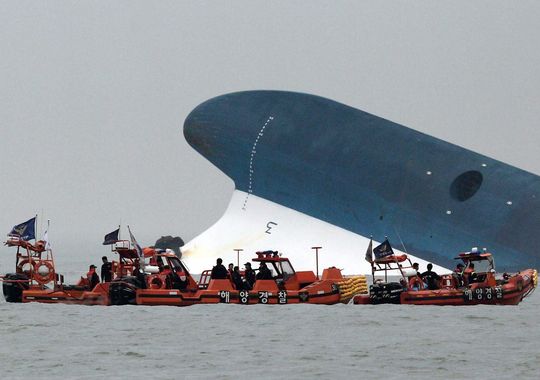Photo via USA Today
Adding to the list of dangerous procedures and oversights factoring into to the tragic sinking of South Korean ferry Sewol, it has been revealed that the vessel was routinely overloaded.
On its final voyage, the vehicle may have been heavier than ever, carrying more than three times its weight limit.
[ad#336]
Documents show that in the 13 months before the ferry sank, it was overloaded on 246 trips, nearly every one it made. This may have been due to a disastrous lack of communication—according to the AP, the Korean Register of Shipping slashed the ship’s cargo capacity by more than half last year, yet neither the coast guard nor the Korean Shipping Association, which oversees its departures, seemed to have known about this new limit.
The Sewol had a cargo capacity of 987 tons. On April 16, when more than 300 people were left missing or dead, it was carrying an estimated 3,608 tons of cargo, according to the company that loaded the ship.
Though the cause of the disaster is still being investigated, experts have said that a significantly overloaded ship could lead to the ferry becoming imbalanced after even a small turn; tracking data indicated that the ferry made a 45-degree turn at about the time it began sinking.
The ferry disaster has exposed South Korea’s tendency to overlook safety precautions, many say, in its quest for economic success.
[ad#336]







